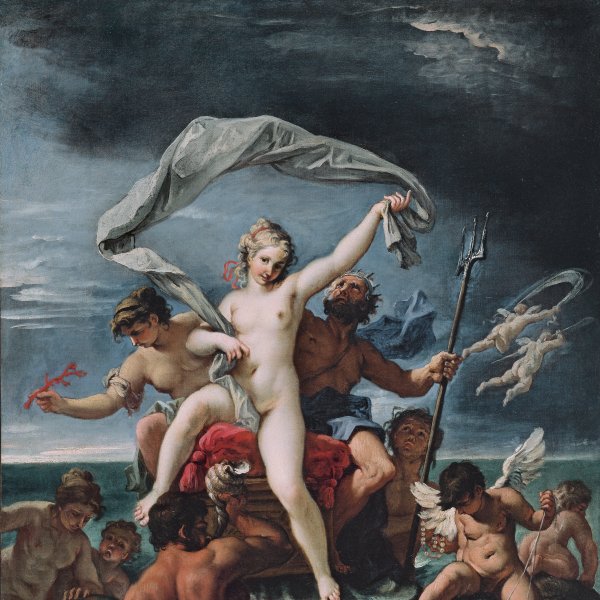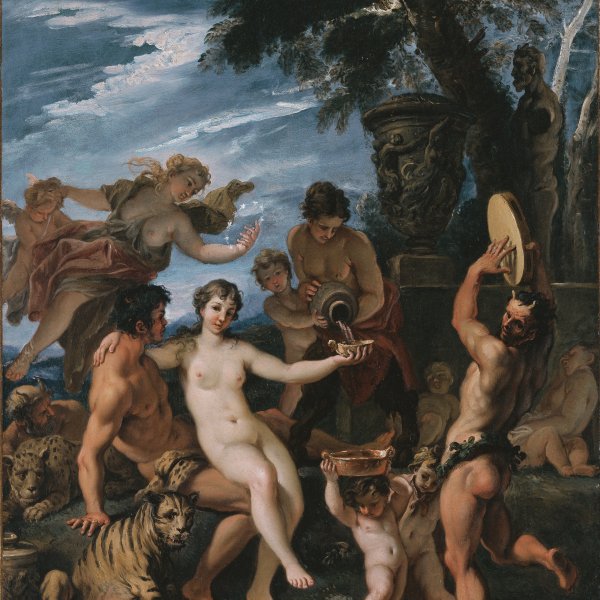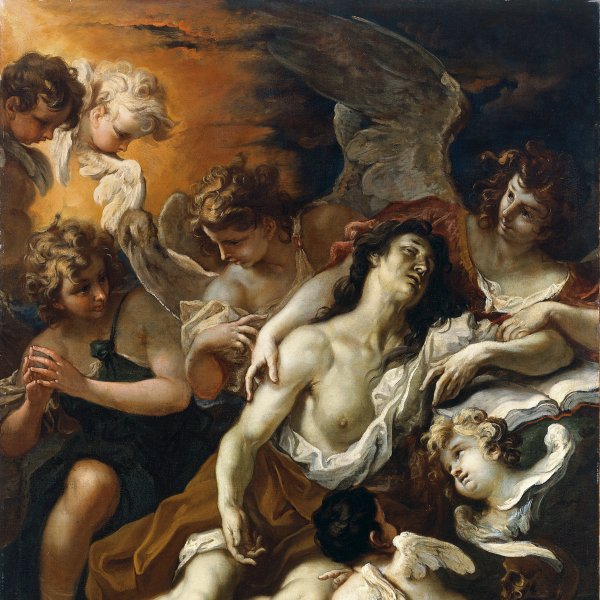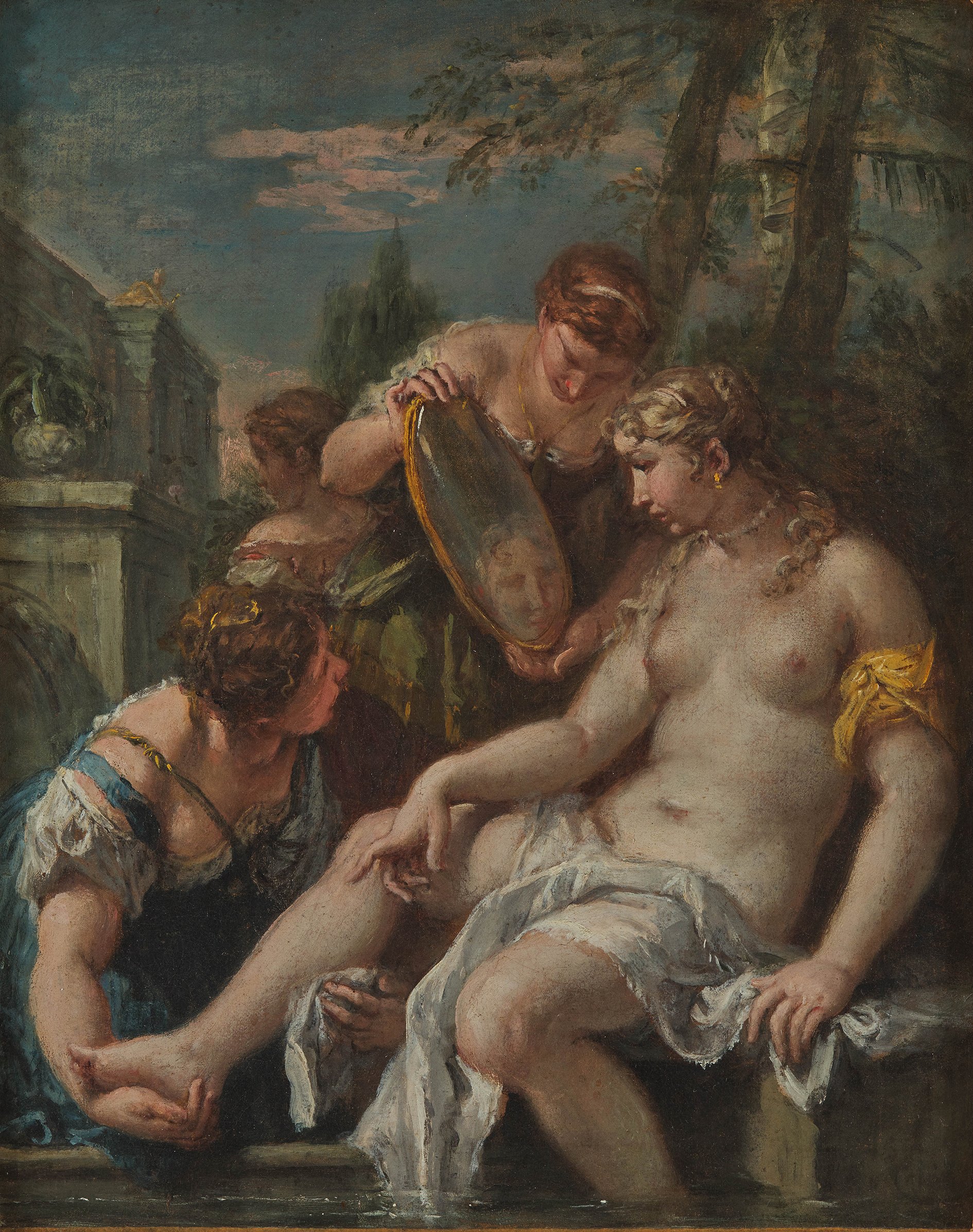Bathsheba at Her Bath
Pallucchini suggested that this small yet exquisitely executed canvas could have been painted around 1728, based on its similarity to the religious paintings commissioned for the Palazzo Reale in Turin for which the artist received a payment in 1727.
From a stylistic point of view, the piece is reminiscent of the later work of another Venetian painter, Veronese (Verona, 1528–Venice, 1588), whose influence is apparent in the muted colour palette, the sophisticated spatial arrangement, the treatment of light, and the great pains taken to capture the atmosphere and landscape. The artist used very loose brushwork to construct a triangular composition around the partly nude figure of Bathsheba at the water's edge, who is doubly present thanks to her face’s reflection in a mirror.





